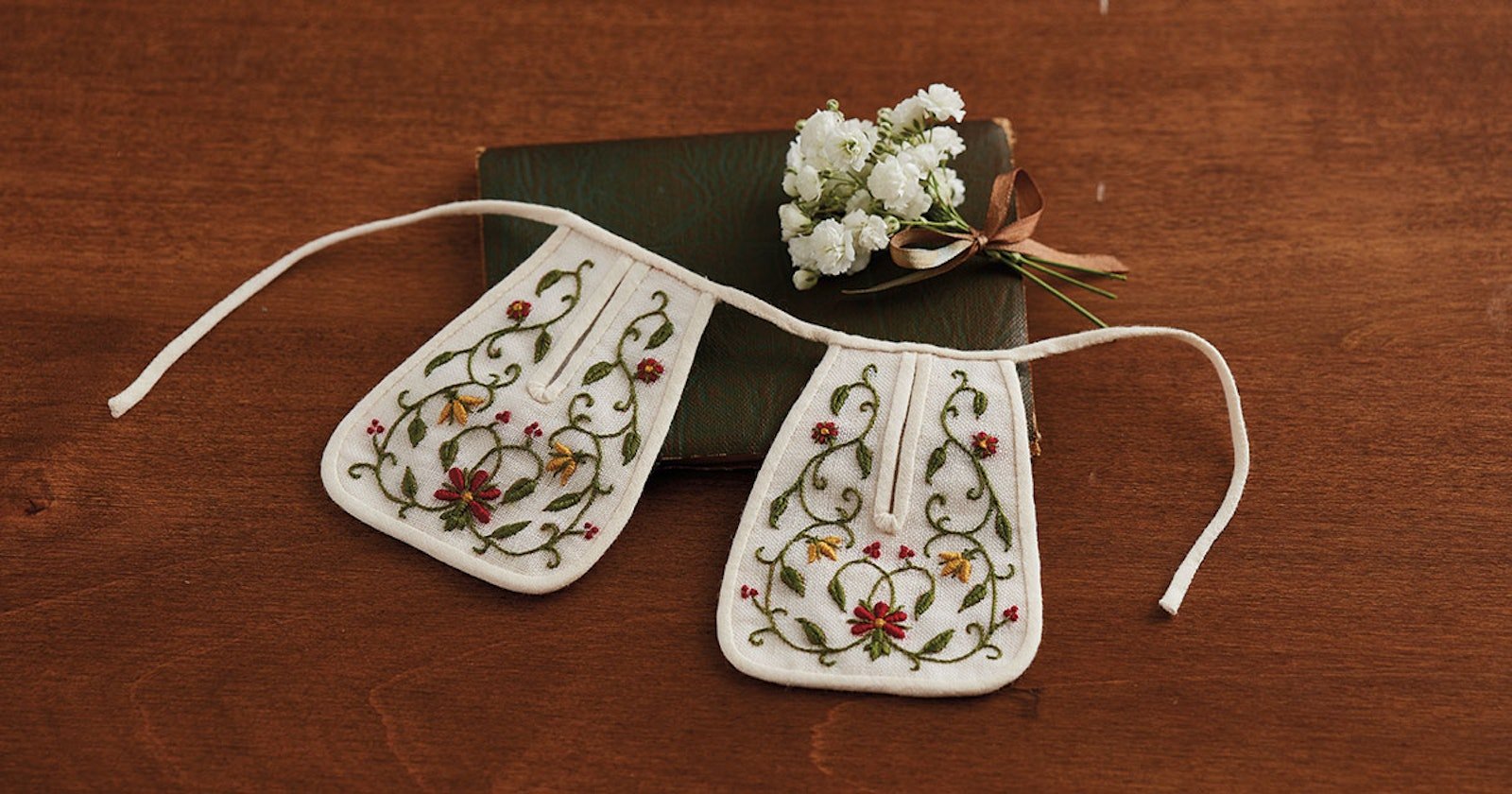Elisabeth Jenkins Baty’s entry in the PieceWork Miniatures Contest 2016—Miss Elisabeth’s Finery: An 18th-Century Lady’s Accoutrements—won an award and led to conversations with Elisabeth about the wonderful world of the fashion doll, a popular portrayer of style in the eighteenth century and the predecessor of fashion plates and then fashion magazines. The conversations, in turn, led to Elisabeth’s article and two projects (exquisite fashion accessories to embroider and sew) in the Spring 2019 issue of PieceWork!
The fashion doll from the collection of the Rijksmuseum in Amsterdam that is shown in Elisabeth’s article wears a robe à la Française (gown in the French style). I can’t explain why, but I have become somewhat obsessed with this particular style of dress. Most of the gowns are drop-dead gorgeous, the embroidery is exquisite, and the accessories are miniature jewels. But that’s not unusual for a variety of period handmade clothing. I think the reason I delved into robes à la Française was to see if I could understand why these incredibly impractical gowns became so popular.
The Metropolitan Museum of Art in New York has a number of these gowns in its collection. Here is some additional information on them from the Metropolitan’s website:
- In its most formal configuration, the robe à la française presented a particularly wide and flattened profile accomplished by enlarged panniers. Constructed of supple bent wands of willow or whalebone and covered in linen, panniers took on broader or narrower silhouettes. The most remarkable held out the skirts like sandwich boards, barely wider than the body in side view but as expansive as possible in front or rear view. A woman so garbed had to pass through a door sideways.
Robe à la Française (gown in the French style). Silk, metallic thread. England. 1750. Collection of The Metropolitan Museum of Art, New York, New York; purchase, Irene Lewisohn Bequest, 1965. Photo courtesy of The Metropolitan Museum of Art.
Above is an image of a life-size example from the Metropolitan’s collection. As noted, and surely applicable to this image, the wearer would have had to turn sideways to enter or leave a room—inconvenient at the very least. But I have other questions: Was it improper to rest one’s arms on the dress? Did people set plates and drinks on it at parties? Who thought this was a good idea? To view other examples of these gowns, visit the Metropolitan’s website. It appears that this style of gown started to become more wearable as the years progressed.
The fashion doll article and companion projects are only the tip of the iceberg; here are some other highlights from this issue of PieceWork:
- Mimi Seyferth in her article, “Molière, Comedy, and Needlework,” states: “Many revere Molière as a comedic genius, but he should also be recognized for his use of needlework references to comment on the narrow scope of women’s lives in his time.”
- Mimi Seyferth also discusses her inspiration for her companion project to the Molière article in the project’s introduction: “A nightcap is an essential element of the costume for Argan, the main character in Molière’s play The Imaginary Invalid. When The Imaginary Invalid premiered on February 10, 1673, at the Théâtre du Palais-Royal in Paris, Molière himself played the role of Argan. Seriously ill with a pulmonary ailment, Molière collapsed during the fourth performance of the play on February 17, 1673, and died later that evening.” The nightcap Molière wore during that final performance is in a collection in France; make your own using Mimi’s step-by-step directions for the gorgeous embroidered example shown below.
Mimi Seyferth’s Molière’s Nigthcap to Embroider and Sew. Photo by George Boe.
- Most PieceWork readers know that we are very fond of Weldon’s Practical Needlework, the Victorian compendiums overflowing with needlework patterns. Who knew there was an actual Mr. Weldon? Mary Polityka Bush knew, and she shares the information!
- Carolyn Wyborny adapted a lace-knitted edging from Volume 5 of Weldon’s Practical Needlework for her shawl project. It’s shown below.
Carolyn Wyborny adapted a lace-knitted edging from Volume 5 of Weldon’s Practical Needlework for her ingenious shawl project. Photo by George Boe.
I hope you’ve enjoyed this sneak peek at our newest issue. There’s so much more!
—Jeane
Featured Image: Elisabeth Jenkins Baty’s miniature fashion accessories designed for a fashion doll. These pockets measure a scant 2 ⅜ inches at the widest part and 3 includes long. Photo by George Boe.




